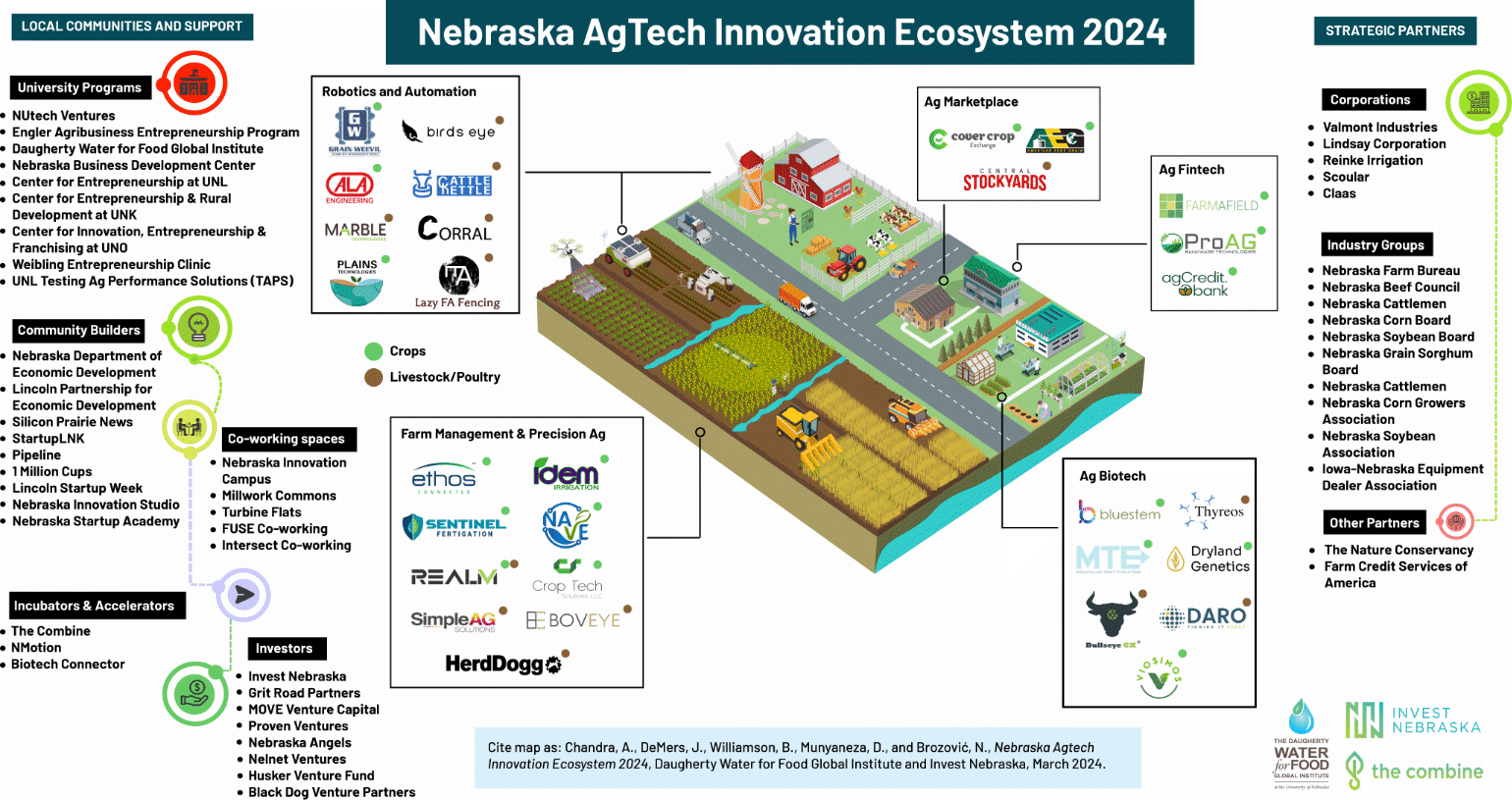The Daugherty Water for Food Global Institute and Invest Nebraska released their first “Nebraska agtech startup ecosystem map” in 2021. Since then, more than 10 new agtech startups have been founded in Nebraska. At the same time, the broader innovation ecosystem has grown, contributing to the state’s economic development. Our new 2024 agtech innovation map looks at the evolving and expanding entrepreneurial landscape in Nebraska.

High resolution image download | PDF download
We consider startups founded or headquartered in Nebraska that deliver value propositions within crop or animal production value chains. For our 2024 map, we define five categories of agtech startups based on the nature of their innovation.
- Robotics and Automation startups offer value propositions intended to reduce manual labor and to undertake dangerous or unpleasant jobs. This group of startups relies heavily on in situ hardware and telemetry including sensors and autonomous vehicles
- Farm Management and Precision Ag startups use data-driven approaches to improve decision making about crop or animal management. Both software and hardware products are used to assess crop health, detect diseases, and to fine-tune the application of inputs such as water, fertilizers, and chemicals.
- Ag Marketplace startups use software solutions to facilitate the buying and selling of agricultural products,
equipment, and services - Ag Fintech startups offer a range of financial services to meet agricultural producers’ needs around accessing working capital and managing risk.
- Ag Biotech startups use genetic engineering to deliver innovations applying beneficial microbes, improving animal or crop breeding, or preventing disease.
Multiple local, statewide, and regional organizations are actively involved in supporting startups within Nebraska’s broader entrepreneurial ecosystem. This includes community-building and mentoring groups, incubator and accelerator programs, and university-based programs. These entities provide startups with knowledge exchange, resource guidance, workspaces, and research, commercialization, and investment support. A variety of for-profit and nonprofit strategic partners provide capital, access to customers, distribution networks, as well as partnerships along the upstream and downstream value chains.
The map was developed by Ankit Chandra, Josh DeMers, Ben Williamson, and Nick Brozović.
We thank Kathy Andersen (Lincoln Partnership for Economic Development), Will Ruffalo (Valmont Industries), Trevor
Mecham (Valmont Industries), and Mike Jung (Grit Road Partners) for their contributions and insights in support of the 2024 map.



